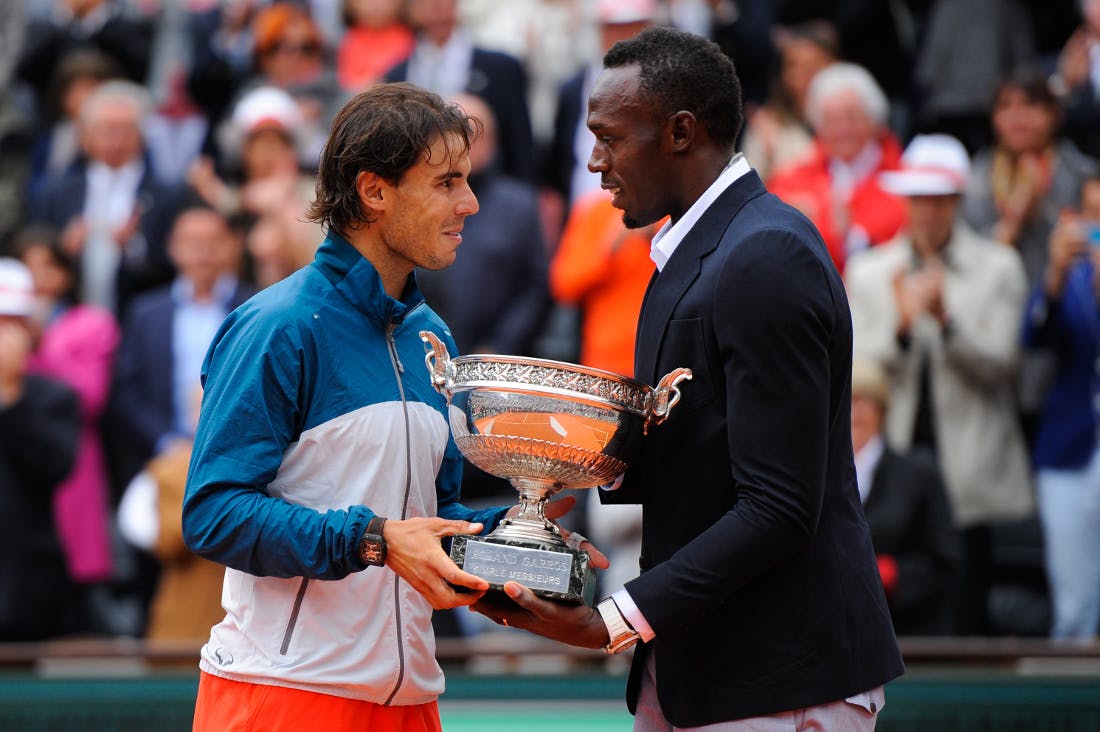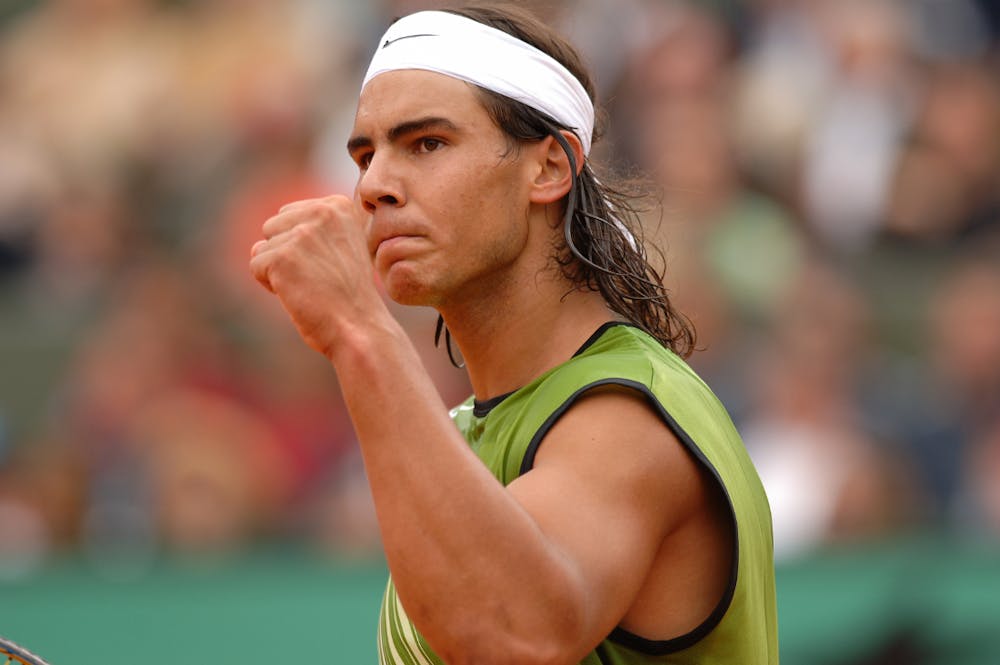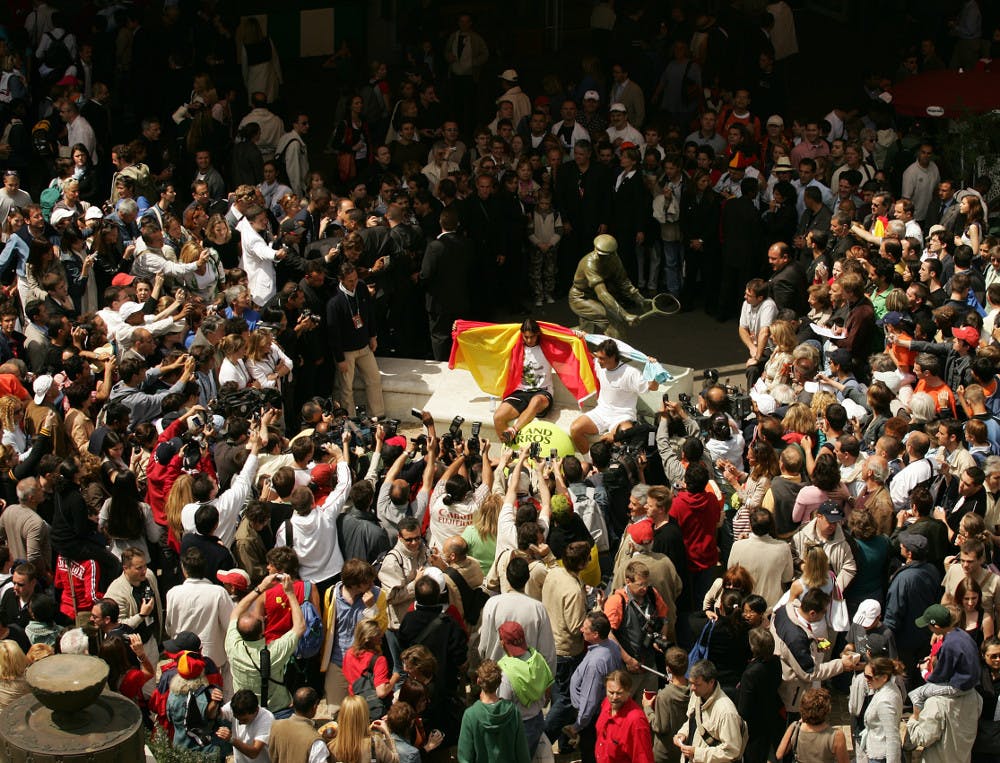See more:
Rafael Nadal's presenters

Remember: ten days shy of his 19th birthday, "Rafa" played his first Roland-Garros match.

Ten days shy of his 19th birthday, Rafael Nadal played his first Roland-Garros match, making his first and last appearance on No.1 Court. Not yet a legend but with all the ingredients of one, Nadal’s first appearance at Roland-Garros paved the way for a new era in tennis.
For most players, the outside courts at Roland-Garros are a rite of passage. Vilas, Lendl, Wilander, Kuerten, Agassi and Djokovic were all put through their paces as unknowns before being allowed to set foot on Centre Court. Not so Rafael Nadal, whose reputation preceded even his first Porte d’Auteuil appearance. Such hype had not been seen since Björn Borg burst onto the scene in 1973, a situation possibly exacerbated by Rafa’s absences in 2003 and 2004 due to elbow and left ankle issues.
By the time Nadal finally made it to the French Open in 2005, his position as a perfectionist prodigy was firmly established. After winning Les Petits As at 13 in 2000 and turning pro at the tender age of 15, Rafa was billed as the next big thing in tennis, along with Richard Gasquet. According to Toni Nadal, his uncle and coach, he was even “a little worried” about Gasquet being in his half of the draw.
Uncle Toni was not the only familiar face back then – Nadal’s long-serving team has stayed more or less the same over the years. Carlos Costa was already his agent. French Open 1998 champion Carlos Moya, Rafa’s former hitting partner in Mallorca, was his “big brother” and example to follow. Speaking on French television after his first match, Nadal said, “Carlos told me there was a great atmosphere at Roland-Garros and that I would love it.”
At just 18, Rafael Nadal had all the professionalism of a title-winner plus the poise of a veteran. Starting off the year ranked world No.51, Nadal’s first exploit came in March, when he took a two-set lead against none other than Roger Federer during the Miami final. His hunger unsated, he went on to take titles in Monte Carlo, Barcelona and Rome.
After a spring spent striking fear into his opponents – including the 2004 and 2003 Roland-Garros champions Gaston Gaudio and Juan Carlos Ferrero (he defeated the former 6-3, 6-0 in Monte Carlo and the latter 6-1, 7-6, 6-3 in the final in Barcelona) – he appeared in Paris ranked world No.5.

Ultimately, there is very little difference between the baby-faced teenager of 2005 and the international superstar of 2017. He has the same predatory glare for his opponents, the same intense focus, the same desire to do well. Back during his first French Open match in 2005, his serve was perhaps less assured and his net play more unreliable. But he still sent off Germany’s Lars Burgsmuller (the 29-year-old world No.96) in three sets without conceding a single break point.
Nadal, as always, had a more negative view of his first and only performance on No.1 Court. When asked if he was happy with his win he said, frowning, “How could I be? My game was so full of approximations and hesitations. In any case, after a match like that, I can’t be considered one of the tournament favourites.”
During an interview on French television on 23 May 2005, interviewer Nelson Monfort asked him if he was tired after such an eventful season on clay. Rafa raised an eyebrow, in what is now universally recognised as his expression of surprise. “Tired? I don’t know…”
This short scene sums up Rafael Nadal in a nutshell. Tired? Him? Very few people have since bothered asking such a question.
